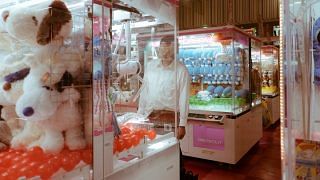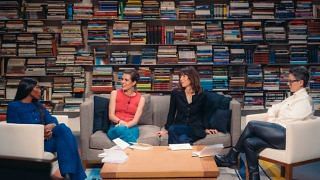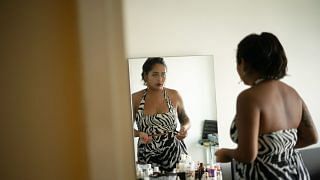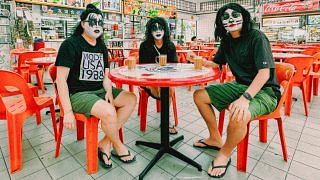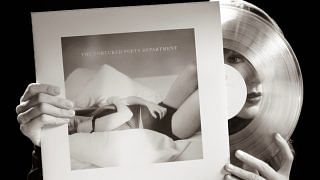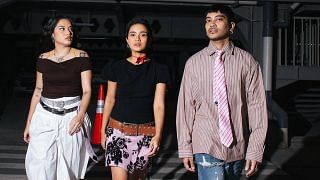Yanyun Chen

Charcoal tends to be messy to work with and is usually used as a precursor to other mediums such as paint. Not for this 32-year-old visual artist/Yale-NUS lecturer, who sees it as “an end in itself; not a sketch”. What she does with it is astounding: monochromatic depictions of flowers and nudity so startlingly lifelike, there’s a photographic quality to them. Her series of melancholic blooms — drawn as they withered across days — was what first got her into the spotlight about four years ago. These days though, it’s her dynamic depictions of the human form that’s getting her accolades, including — the latest — a finalist title in 2018’s President’s Young Talents (PYT) programme (the winner was unannounced at press time). The ones in her deeply personal PYT show, The Scars That Write Us, explore the effects of scars on people; each taking more than a week to realise. Come April, expect an extension of it. Of her favourite medium, she says: “The textures (and) three-dimensionality of charcoal can’t be achieved with printing, where everything is glossy… The imperfections and changes in materials that can be controlled through craft and by hand are very special.”
Up next, a follow-up to The Scars That Write Us, scheduled for April.
Ashley Yeo

The first local artist selected as a finalist for Loewe’s annual Craft Prize last year, Yeo is known for her intricate, palm-sized paper sculptures that are quite literally a labour of love. Arbitrary Metrics II — her entry for the Spanish fashion label’s global competition to discover a new gen of artisans who create objects by hand — features the 28-year-old’s signature gossamer latticework. A similar piece, she says, can take up to 110 hours to hand-cut, and a tear means having to start all over. It’s a delicate process that celebrates the notion of slowness, with her describing the work as a “reaction (against) the mass media that we are constantly exposed to; being bombarded by visual information and increasing violence.” This passion for creativity born of a quieter space and time (no surprise that she’s a fan of Hayao Miyazaki’s hand-drawn animated films) manifests similarly in her dreamy drawings that tend to utilise “old-school” tools such as watercolour paint and graphite.
To see her next series of paper sculptures, head to the Mizuma Gallery at Gillman Barracks in April.
Crystal Lee

Don’t be surprised to see more of Lee’s accessories and art label Project Coal in the upcoming months, what with tie-dye being huge on the Spring/Summer 2019 runways. Far from being trend-driven, the 25-year-old has been approaching the dyeing of fabrics as an art form since 2014 — though this, she says, is her first interview with a local magazine (the practice just hasn’t been that big here, she points out).
Working with dyes derived from the likes of plants, fruits and even insects — some so exotic, they have to be imported from India, the US and UK — she soaks linen and cotton in the pigments for anything between one hour and an entire night. Controlling the whole process by hand, and with her fine arts-trained eye for the desired shade and intensity, she then transforms the fabrics into scarves, totes and wall hangings — each limited to about 20 pieces — with a poetic, wabi-sabi appeal. There’s just something “authentic and honest” about working with natural dyes in such a manner, she says. “(And honesty is) the most genuine thing you can do through your art.”
Read more on the next page.
Khairullah Rahim
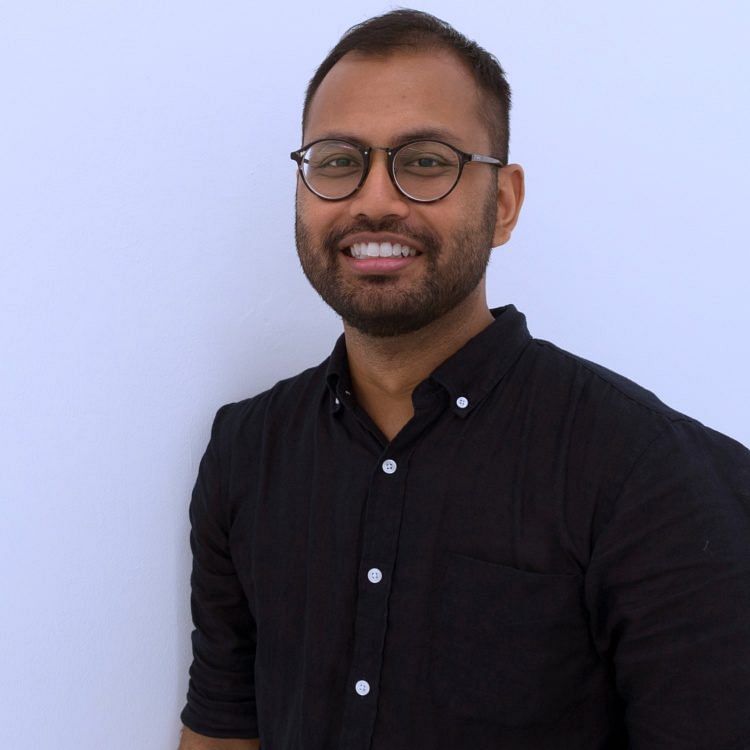
One man’s rubbish is another’s man’s treasure. This “pick-up” artist (he literally trawls the beach, parks, and even swimming pools for days in search for potential materials) uncannily transforms everyday items like brooms, towels and road signs into surrealistic, pastel-hued assemblages that both delight and confound with their colours and tactile textures. Though his art evokes a joyful facade, the 31-year-old points out that they are “ultimately concerned with narratives of loss and longing”, while representing issues faced by marginalised communities. It might explain his penchant for collecting and working with found objects. “When collected in their raw state, I feel that the specificity of these objects and materials add a greater depth to the work,” he says. Ironically, they’ve indeed brought him “gold” – at press time, pieces from his most recent solo show “The Incredible Frolic”, staged at Yavuz Gallery, had largely sold out.
Charmaine Chen

There can’t be a better name for this industrial design-trained, 30-year-old’s company. Started in 2014, Old World Charm specialises in sign painting the traditional way. First she sketches (technology has helped ease this process and she’d be silly not to use it, she admits), then transfers the design onto its destined surface, before painting or applying gold-leaf onto every stroke by hand. The latter process is particularly delicate since she’s working with pure gold that’s been hammered into thin slivers. Depending on the base material, intricacy of the work and even weather, a sign can take as long as months for her to complete.
“(Different) layers, textures and the beauty of imperfection are all elements I relish to establish depth and character,” she says of her MO, which has resulted in elegant yet quirky signage, murals and windows that look as if they’re from decades past. The digital age can be “a tad monotonous” she says, and her craft is her way of “stirring up nostalgia and reminding people that old is gold”. Evidently, many creatives agree — clients have included vaunted sneaker artist Mark Ong of SBTG and, as recent as last October, branding agency Goodstuph and The Substation.
Nature Shankar
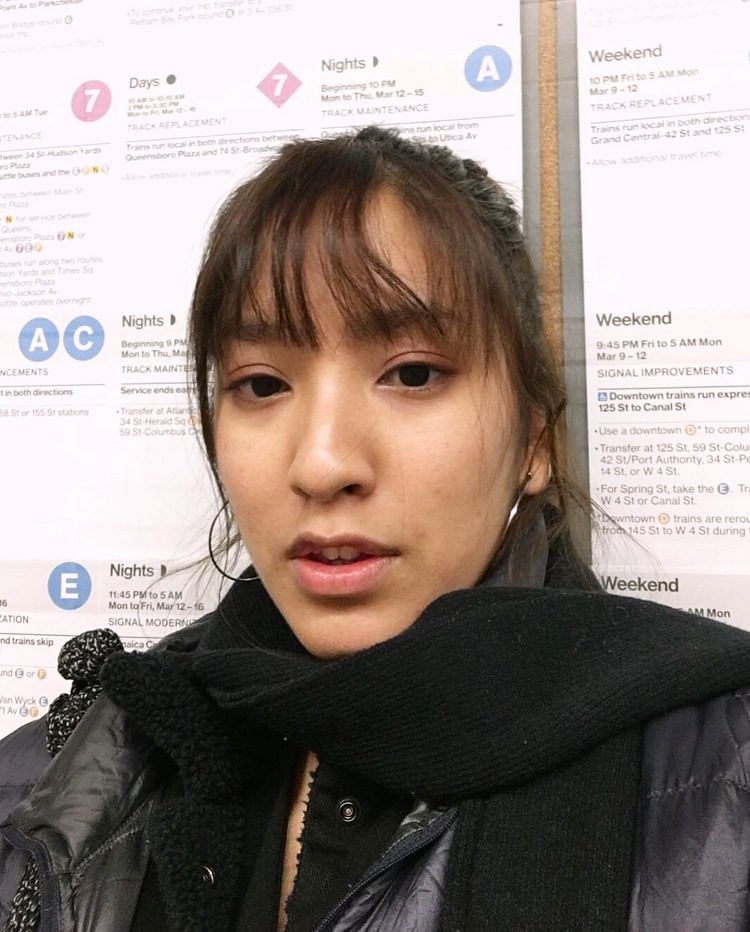
For her craft, this 22-year-old visual artist spends eight to 10 hours a day sewing – she’s even sprained her elbow once while at it. The result of her efforts, however, is anything but your usual piece of embroidery art. Exhibited at the likes of Gajah Gallery in Yogyakarta and, soon, various Chinese cities like Beijing, Shanghai and Shenzhen, they range from a bulging, Dadaist collage of fabric, oil painting and handmade paper (Out Of Bounds, 2018) to a conceptual installation that includes two large embroidered portraits with their loose threads strung onto an armchair (Somewhere Along The Line(s), 2017).
Exploring the “dynamics of identity, race, cultural heritage, internal bias, truth and human existence”, her work often involves using fabrics personal to her — saris gifted by her paternal grandmother, for example — as a base, and always her putting needle to cloth by hand. “Hand embroidery is much more time and labour intensive, which plays heavily into its organic process and the intimacy it captures,” she explains. “(It’s) much more personal than machine sewing.”
This story first appeared in Female’s January 2019 issue.










